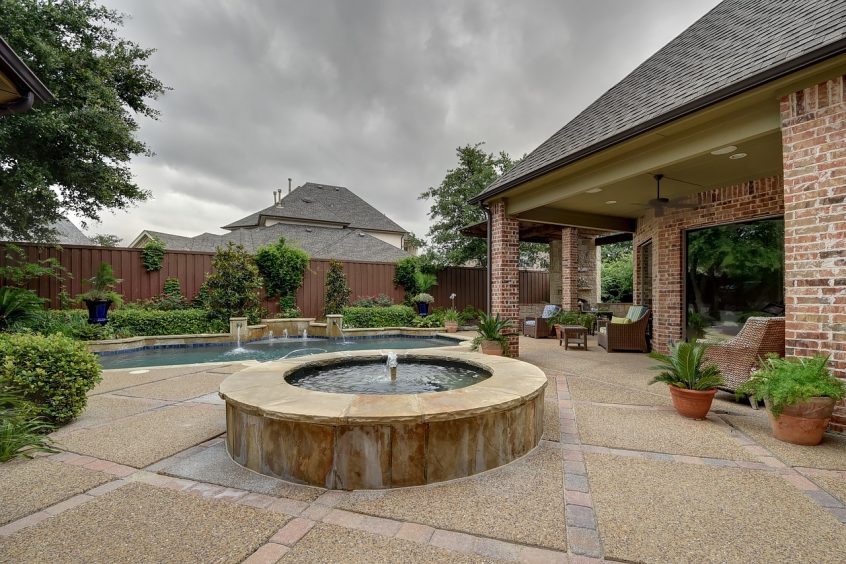Throughout history, water has been considered an everlasting commodity. However, much is changing and worldwide water supplies are dwindling due to pollution from overuse and industrialization. Water is a necessity for drinking, cleansing, hydrating, agriculture, food processing, power generation and sewage transport; therefore, the further its replenishment becomes unsustainable, regulations dealing with its use will only increase. As a result, the idea of selling hot tubs as a luxury item could become more difficult. Further, it also begs the question, what will the future hold for an industry where water is the integral part of what is sold and serviced?
To avoid the effects of possible water regulations and ensure the success of the hot tub market, it is time for the industry as a whole to review how hot tub water is treated and managed.
Do current chemical programs create waste?
Traditional water maintenance for hot tubs requires draining the water once every three months. Considering the average hot tub contains 1,325 L (350 gal) of water, and assuming owners perform regular maintenance, this means 5,300 L (1,400 gal) of water is drained from one hot tub per year. When looking at the bigger picture, and taking into account there are approximately 6.5 million hot tubs in North America, it would mean more than 30 billion litres (8.4 billion gallons) of water is drained from hot tubs annually.

If hot tub draining requirements were reduced to once per year, it would result in savings of more than 21 billion litres (5.5 billion gallons) of water.
Despite hot tub water usage being only a drop in the bucket when considering Canada (1,494 m3 [52,760 cf] per person/capita) and the United States (1,682 m3[59,399 cf] per person/capita) consume more water than the average of 14 other countries,1 if strict water conservation restrictions were enacted, it would certainly have a profound effect on the hot tub industry. Therefore, a water maintenance program, which would be effective at conserving water, would be ideal. For instance, if draining requirements were reduced to once per year, it would result in a savings of more than 21 billion litres (5.5 billion gallons) of water.
This type of forward thinking is required to ensure the future success of the hot tub industry. Current water maintenance programs are involved and cumbersome and usually mean adding various chemical substances, with each increasing the buildup of solids. This leads to further problems, which makes the water increasingly difficult to maintain; thus, draining the water becomes the obvious answer.
Why do people buy hot tubs?
When asking consumers why they purchased their hot tub, typical responses would include: stress relief, relaxation, physical therapy or health or simply family fun. The one thing they would never say is they bought it to practice water chemistry.

Consumers purchase hot tubs for stress relief, relaxation, physical therapy or health or simply family fun—not to practice water chemistry.
Today, consumers are becoming more resistant to maintenance programs that involve measuring and adding a variety of products to a bucket and waiting to pour the concoction into the water—this is the era of blister-packaged dishwashing soap and one-cup coffee packs. When considering maintenance programs for hot tubs, the industry must find ways to incorporate simplicity into the system as consumers are demanding it.
Norm Coburn, owner of New England Spas and Saunas in Natick, Ma., agrees.
“Most potential hot tub customers simply want to know if they are going to be a slave to maintaining water chemistry; they want to know how difficult or easy it’s going to be. Once I assure them it will only take a few minutes per week, they tend not to dwell on chemistry,” he says.
“My business has always focused on a ‘minimalist’ approach to using chemicals in spas. This has been good for the environment as well as my business, as we focus more on high-margin services rather than low-margin, commodity chemicals.”
And, as water rates increase and regulations on draining and usage become more prevalent, dealers are doing their part to ensure the consumer’s perception of hot tub ownership does not change.
For instance, Alice Cunningham, founder and co-owner of Olympic Hot Tubs in Washington State, explains to her customers that using a hot tub is far better for the environment and conserves far more water than a typical bathtub.
“Many of our customers use their spa for stress relief after a busy day,” she says. “They want to sit in hot water and let the tension leave their body. However, if they did this in a bathtub, it would be far more wasteful and damaging to the environment.”
For example, a typical 303-L (80-gal) bathtub used twice a week for six months would require 10 times the water needed for most average hot tubs. Further, if compared to a typical jetted or whirlpool bathtub used over the same period, it would require 16 times the water.
Remove instead of react
The hot tub industry needs to look at different ways to deal with water maintenance in the units that are sold and/or serviced. For years, everything in water care has been dealt with on a reactive basis with the first reaction for any type of problem usually involving the addition of chemicals.

The hot tub industry needs to look at different ways to deal with water maintenance in the units that are sold and/or serviced.
Perhaps a new approach should be considered. For example, instead of adding more chemicals or additives to solve water problems, additional technologies need to be developed, which remove contaminates and make the water more pure. Or, rather than using sanitizers that are sodium-based liquids, or granules/tablets that dissolve, a biocide could be used instead to kill germs in the water on contact. This could exist in a filter or a device within the plumbing that disinfects the water as it passes through.
Further, the development of a portable reverse osmosis unit for hot tubs, which would be capable of removing solids and bringing water back to a more pristine state, could also help in reducing the frequency of draining.
| WATER FACTS |
|---|
| • The earth comprises 75 per cent water; • Ninety-seven per cent is salt water and is contained in the oceans; • Of the remaining three per cent that is fresh water, two per cent is unavailable as it is frozen in glaciers and polar ice caps; and • Technically, only one per cent of the earth’s water is fresh and available for drinking, agriculture, food processing, power generation, cleansing, sewage transport and filling hot tubs/swimming pools. |
The future of hot tub water treatment
The hot tub industry has ridden the wave of multiple hot water chemical programs without really focusing on the need for conservation. Today, however, numerous manufacturers have made strides in both water treatment and preservation by incorporating new technologies and treatment systems into their hot tubs.
Some examples that are currently being employed include no-bypass filtration (i.e. all water passes through the filter before it enters the hot tub), factory-installed ozone systems, which use highly concentrated ozone bubbles to neutralize contaminants on contact, while also reducing the need for additional chemicals and lengthening the amount of time between cleanings. Some manufacturers say these additional water care features can reduce the need to drain hot tub water from four to two times per year.
“Consumers perk up when they hear about new hot tub technologies like ultraviolet (UV) and ozone disinfection systems, which help to reduce chemical usage,” says Coburn. “Though there has been some misconception about salt systems, many consumers think they are going to be bathing in the ocean—they don’t realize salt is used to create chlorine onsite.
“It’s important the industry doesn’t perpetuate any of these misconceptions but rather explain the benefits of these alternative systems. And, in theory, these new systems should lengthen spa water life.”
Are we there yet?
Has the hot tub industry started to address these issues of simplicity and conservation? Walking into any independent hot tub dealer could lead to answering this question with a ‘no,’ as one will still see a multitude of chemicals, which can cause confusion among incipient hot tub owners.
However, there have been some breakthroughs, including new multi-use chemicals and sanitizer-type devices (e.g.ozone and UV), which minimize the need for solid or granular disinfectants.
Coburn is one retailer who is seeing these changes and innovations occur as many of the hot tubs his company now offers have built-in features that reduce chemical usage.
“We offer hot tubs equipped with UV and/or ozonator systems,” he says. “And, if they aren’t equipped with an ozonator, we will install the unit for our customers. It’s a little early to tell if these units will extend the life of the water, but that is the goal. As a company, our goal is to be more environmentally conscious and sell more eco-friendly products.”
Other hot water maintenance innovations include mineral sanitizer systems and natural alternatives (e.g. seaweed enzyme extract), which reduce the need for chlorine and extends the life of the water and lengthens the period between draining.
“It’s not for everyone, as it’s best suited for users with lighter bather loads and requires more filter cleaning,” adds Coburn. “However, for those customers, it dramatically increases the life of the water.”
Cunningham also points out these water treatment alternatives also allow hot tub owners to use the water they remove from the hot tub on their lawns and gardens.
“You can’t do that with soapy water from a bathtub,” she adds.
Creating a positive perception
When automobile designers started incorporating safety features (e.g. airbags and seatbelts) into their designs,2 the big car companies initially rejected the idea as they believed it would send a negative message to buyers that cars were unsafe. However, the hot tub industry can learn from this and create a positive perception to consumers by being proactive and addressing current water challenges and presenting solutions, including how hot tubs can conserve water when treated and used properly.
This article was written by Terry Arko and originally appeared on Pool & Spa Marketing [link].
